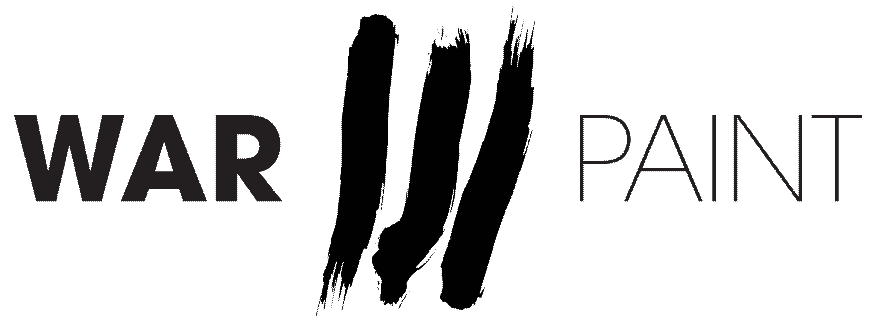Your Guide To Clean Beauty
Clean beauty--it’s a term we love. Makeup should feel luxurious, empowering, and enjoyable. When you apply your favorite lipstick, you don’t only want to look good, you want to feel good. This is something we can take into account with makeup, as the products we use should be free of toxins. Due to this, we want to encourage and teach you how to take part in clean beauty.
The rise of clean beauty confronts poor-quality standards in our products. It also offers safer alternatives with transparent labels so you don’t have to compromise between beauty and health.
“The problem is, without regulation, anything can be called ‘clean’— whether proven unsafe or not.”
What is Clean Beauty?
Today.com defined clean beauty as a change that “embraces both natural and man-made ingredients, putting the focus on safety over source.” It’s essential to know that just because products say “natural” does not mean that they're safe. Meanwhile, you should note that “not all synthetic ingredients are unsafe.” Clean beauty isn’t focused on only product marketing, but rather on ingredients, which is key. A brand may promote itself as vegan or all-natural, but that doesn’t mean anything about the actual ingredients and their risks.
Why Use Clean Beauty Products?
The Food and Drug Administration is in charge of handling cosmetics. These laws fall under clean beauty. Yet, they do not regulate ingredients. Brands are not checked on what toxic substances they add to their products.
Good Housekeeping points out issues in beauty industry regulations by stating: “The problem is, without regulation, anything can be called ‘clean’— whether proven unsafe or not.” Their clean beauty article also shows how the U.S. has fewer regulations than other countries. In the U.S. “the FDA has prohibited only 11 ingredients." In contrast, "over 1300 unsafe ingredients are banned” in Europe and Canada.
Several products can cause potentially harmful health conditions from toxic cosmetic ingredients. One of the most toxic substances that have repeatedly been found in makeup and personal care products is asbestos. Cosmetics such as blush, foundation, and eyeshadow usually retain a powder-like consistency. Talc is an ingredient in makeup that supplies that texture. While talc isn’t harmful alone, asbestos is a common contaminant in talc. If there is asbestos in makeup, consumers are at risk for mesothelioma or lung cancer. Understand that talc-based makeup has the potential for cross-contamination with asbestos, but it is a generally safe ingredient.
What to Look for in Your Beauty Products
If you want to stay on top of your beauty regimen and switch to cleaner products, you should read up on the guidelines for standards in beauty and know where to shop.
Product labels are insights into what kinds of ingredients you are applying to your skin. There are a dozen terms that could be confusing to you. In Good Housekeeping’s article, they also created a guide for you that defines common beauty terms.
While they provide a better definition, they also give advice for when these labels are accurate and trustworthy:
Green or Sustainable:
Look for certifications for sustainability and the Green Good Housekeeping Seal.
Fair Trade:
Look for verifications from Fairtrade International, Fair Trade USA, or Fair for Life. These can also be found on the brand’s website if not on the package.
Cruelty-Free:
Look for endorsements from Leaping Bunny or the Good Housekeeping Beauty Lab’s gold standard. Both of these ensure that the product is made through a certain standard, not just the brand’s own discretion.
Organic:
Look for a label that says it is USDA-Certified Organic or NSF Organic-Certified. These two agencies protect consumers from using cosmetics that don’t meet the minimum requirements.
Natural or All-Natural:
Look for confirmation that no less than half of the product’s ingredients are plant-based from an environmental organization stamp.
Chemical-Free:
Look for detailed information with transparent labels and a Good Housekeeping Seal, which compiles data to authenticate chemical-free claims.
Non-toxic:
Do not look for this label. It’s disputed as there is no evidence that any ingredient can be non-toxic. Improper use or too much of an ingredient can be toxic. There is no research to prove or disprove this claim--making it deceptive.
Best Non Toxic Makeup and Skincare Products
Additionally, some popular brands have come out with clean makeup lines for your convenience. There are always lists online of the best beauty products to choose from for your skin, eyes, or hair. Last year, Women's Health Magazine provided a recommendation for the top 20 natural makeup brands.
On a positive note, some changes are on their way. Recently, “Governor Gavin Newsom signed the Toxic-Free Cosmetics Act, making California the first state in the nation to ban the use of 24 toxic chemicals, including mercury and formaldehyde, in beauty and personal-care products.” This happened in September 2020 and became a “momentous piece of legislation” for clean beauty and the residents of California.
This wave of advocacy for clean beauty is an amazing start. While we wait for other states to follow suit, we can participate in living toxin-free. By opting to buy honest cosmetics, you can feel clean on your wedding day, birthday, or for whatever occasion arises.


